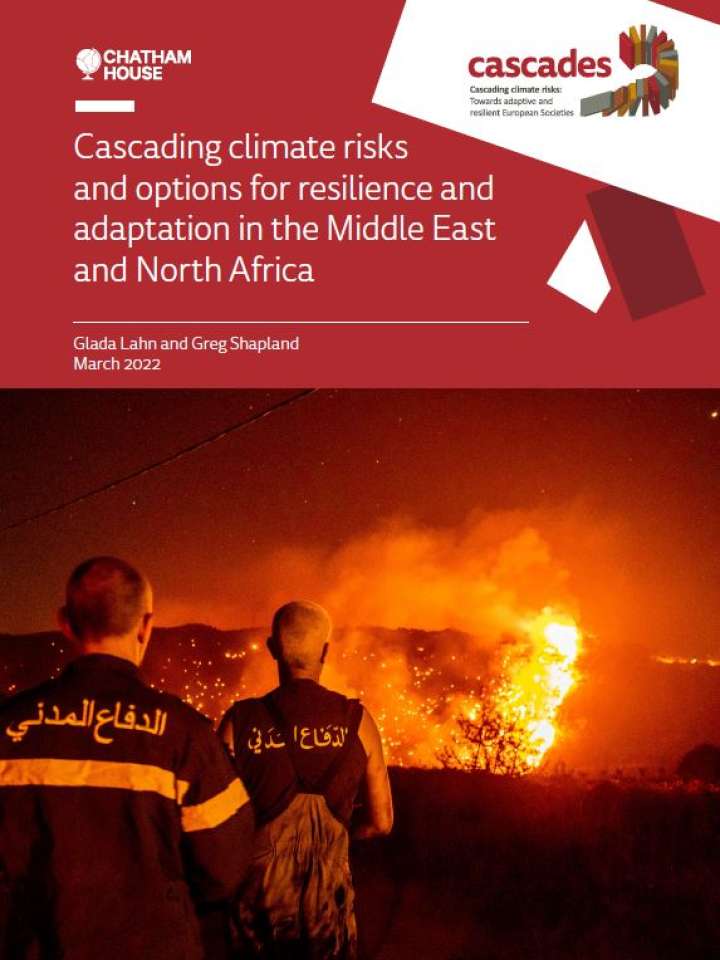Cascading climate risks and options for resilience and adaptation in the Middle East and North Africa
This report assesses the current situation and future projections of possible and likely biophysical climate impacts in the MENA region, based on a literature review, news articles and CASCADES climate impact data analysis.
The MENA region is exposed to physical climate impacts that threaten human life and political stability on several fronts. Water and agricultural production are particularly sensitive to the extremes of global warming, given the region’s already arid and semi-arid climates. Sea level rise threatens rapidly expanding urban and industrial coastlines over the next century and most cities are ill-prepared for the ravages of cyclones, sand storms and flooding. Humidity may become the most serious challenge to human life, especially for coastal cities.
The authors adopt a water–food–energy nexus perspective, given that this resonates with environmental interests in the region. However, this concept remains open to new understandings that put a greater emphasis on ecosystems and well-being – for example, air quality, biodiversity and nutrition. Irrigation for crops and agricultural processing, water for energy, energy for potable water as well as oil and gas revenues to pay for food imports are some of the dependencies that climate change is challenging in the region. These are also some critical areas offering opportunities for resilience-building.
Explore further
